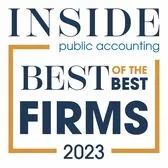Due to the newness and uniqueness of the Opportunity Zone (OZ) Program and the voluminous OZ regulations, there is a fair amount of inaccurate information floating around in the business community. Following is a non-exhaustive list of some of the more common misconceptions about this powerful federal tax program. Note that June 28th is the deadline for setting up a Qualified Opportunity Fund (QOF) and investing cash or property from most calendar 2018 capital gains. More details on the program can be found at services-Federal-Qualified-Opportunity-Zone.html.
1) Only taxpayers with long-term capital gains can participate in the OZ Program.
False: Short-term capital gains and net §1231 (trade or business asset) gains, §1250 building depreciation recapture, capital gain dividend distributions, and a portion of certain “straddle” transactions can also qualify for Opportunity Zone (OZ) reinvestment. Unlike Internal Revenue Code (IRC) §1031 transactions, the OZ program can be used for real estate, tangible personal assets, bitcoin, art, collector cars, business sales, intangibles, and stocks.
2) The 180-day reinvestment period required to transfer funds into a Qualified Opportunity Fund (QOF) begins to run on the date of sale.
Generally False: The only times the 180-day period starts on the actual sale date is when: (i) the taxpayer sells a directly owned capital asset, say shares out of their stock portfolio titled in their name or in their grantor trust, or (ii) a partnership or S Corp sells a non - §1231 capital gain asset and elects to invest the gain at the entity level vs. the equity holder level. This is advisable when a taxpayer wants to make a 2019 mid-year reinvestment rather than wait until year-end to make a QOF investment.
On the other hand, the OZ Regulations allow/require both capital gains and IRC §1231 gains flowing to taxpayers via a K-1 (e.g., from S Corps, Partnerships, and Non-Grantor Trust) to treat such gains as occurring on the last day of the entity’s tax year, generally December 31st. Note: extra care must be exercised in evaluating fiscal year flow-thru entities.
Finally, all IRC §1231 gains and losses (those gains and losses attributable to assets used in a trade or business) from both direct investments, such as a Schedule C or Schedule E assets, as well as indirect K-1 investments, are all deemed to occur at the year-end of the taxpayer or the end of the fiscal year of the flow-thru entity. All these amounts must be netted, and if the net §1231 activity produces a gain, this net amount is eligible for QOF reinvestment.
It is important to note that pure capital gain income (i.e., gains other than §1231 activity) is not required to be netted with capital losses generated during the measurement period – or capital loss carryovers - and the full amount of capital gain is eligible for OZ reinvestment. As you can see, evaluating what constitutes an eligible OZ gain is fairly complex.
3) Taxpayers can invest in an existing business located in an OZ, and the business will automatically be eligible for all the OZ benefits.
Generally False: First if the business was formed and operational prior to 2018 then the assets owned prior to 2018 will generally not meet the 70% Qualified Opportunity Zone Business Property (QOZBP) test thereby making eligibility very difficult unless a substantial investment into new qualified assets will be made within the near future. It may be possible for the new owner to lease the OZ assets from the current owners and since the leased assets will generally be treated as “new” under the regulations, the 70% test may be easier to meet. It will often be easier to move a non-OZ business into an OZ or start a new business from scratch.
4) A taxpayer owning existing OZ land and building(s) can make significant improvements within 30 months, which will make the entire OZ project qualified.
False: While substantial improvements made to an existing OZ property would represent QOZBP, the underlying land and any existing building would not be qualified and would not benefit from the 5, 7, and 10-year step ups unless building basis is doubled within 30 months. A taxpayer owning an existing QOZBP would need to either sell the property to a QOF and retain 20% or less of the QOF, or contribute the property to a QOF in which case only their tax basis in the property is counted towards an eligible QOF reinvestment and the difference between the fair market value and the tax basis creates a “Mixed Fund” investment for the taxpayer – splitting the QOF into a qualifying tranche of OZ investment and a non-qualifying tranche, which is ineligible for the 5,7 and 10-year tax basis step-ups.
5) As long as a taxpayer invests in an OZ census tract, they will benefit under the OZ Program for both federal and state purposes.
Not Necessarily: While all states and U.S. Territories have qualified OZ census tracts, only 34 states have adopted the federal OZ Program provisions up to this point, and a few states do not impose capital gains, the state tax landscape must be carefully analyzed on a case-by-case basis. For Example: let’s assume a New York (conforming state) investor rolls a $1 million capital gain into a QOF in 2019, and then decides to invest in a commercial building in Los Angeles (generally a non-conforming state). The building appreciates to $1.5 million in 10 years at which time he sells the building. For New York purposes, his gain is deferred until 2026; he would get a basis step-up in his investment in years 5, 7, and 10. However, since California generally does not recognize the program, his $500,000 gain would be fully taxable in California and assuming the investor is still a NY resident at the time he will get no state tax credit since he did not pay NY tax on the $500,000 gain. Picking the wrong state for reinvestment negated the NY benefit he expected to derive. Also, note that some states require residents to invest into census tracts within their borders to participate in the state OZ Program.
The OZ Program is flexible, powerful, and has drawn national and international attention for its economic and community development potential. Treasury has done a fantastic job issuing detailed, and taxpayer-friendly, guidance on the OZ program. However, there are still many technicalities which must be evaluated and understood as taxpayers implement the program.
About Blake Christian
Blake is a tax partner in the Park City and Long Beach offices of HCVT - a Top 30 CPA firm headquartered in Los Angeles. He can be contacted at (562) 305-8050 or blake.christian@hcvt.com. www.hcvt.com


